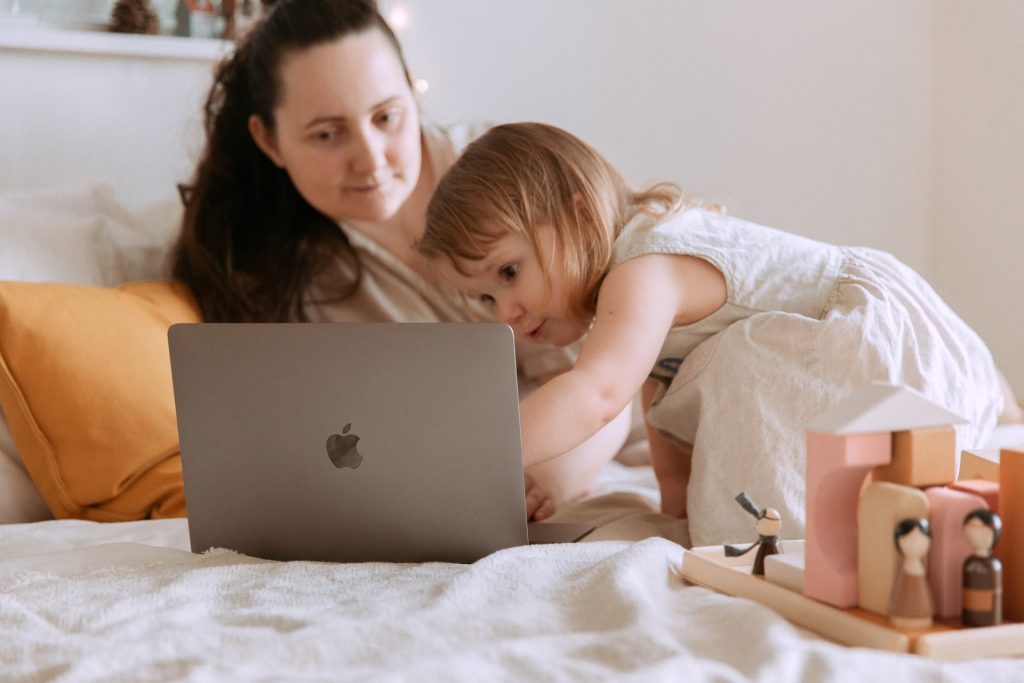Discover effective strategies and tips on how to teach coding to a 2-3 year old child.
How to Teach Coding to a 2-3 Year Old Child
Coding is not just for adults anymore! Even toddlers can learn the basics of coding and have fun while doing it. In this article, we will explore the exciting world of coding for 2-3 year old children. So, grab your little one’s attention and let’s dive into the fascinating realm of coding together!
Understanding the Basics of Coding for Toddlers
If you think coding is only for grown-ups wearing oversized glasses and sitting behind fancy computers, think again! Today, coding is becoming an essential skill for everyone, including our tiny tots. It’s like learning a new language, but instead of words, we use commands to communicate with computers and make things happen.
How does a toddler benefit from coding, you may ask? Well, coding enhances problem-solving, critical thinking, and logical reasoning skills. It also fosters creativity and imagination in children. Plus, it’s a lot of fun!
But let’s dive deeper into the world of coding for toddlers and explore why it’s so important in today’s digital age.

The Importance of Coding in Today’s World
Before we jump into the nitty-gritty of teaching coding to toddlers, let’s talk about why coding is important in today’s digital world. Coding is the language behind computers, websites, apps, and all the cool gadgets we use every day. It’s what makes our devices come alive and perform various tasks.
By teaching coding to our little ones, we are preparing them for the future and giving them a head start in a technology-driven society. In this fast-paced digital era, coding skills are highly sought after by employers, and having a foundation in coding can open up a world of opportunities for our toddlers as they grow up.
Moreover, coding empowers children to become creators rather than just consumers of technology. They can bring their ideas to life, build their own games and stories, and share them with others. It’s a way to nurture their creativity and encourage them to think outside the box.
Simplifying Coding Concepts for Young Minds
Now, you might wonder how on earth we can make coding understandable for toddlers. Well, fear not! We have some fantastic techniques to simplify coding concepts for those young minds.
One of the key strategies is using visual programming languages designed for children, like ScratchJr or Blockly. These languages use colorful blocks that toddlers can snap together to create commands and actions. It’s like playing with virtual building blocks! Through these visual languages, toddlers can grasp the fundamental concepts of coding, such as sequencing, loops, and conditional statements, in a playful and intuitive way.
Another approach is to incorporate storytelling and play-based learning into coding lessons. By turning coding into a fun adventure, your toddler can immerse themselves in a world where they play the role of a brave explorer, solving coding challenges along the way. They can navigate through virtual landscapes, interact with characters, and complete missions by using coding commands. This interactive and engaging approach ensures that learning coding never feels like a chore but rather a thrilling experience.
Furthermore, coding can be integrated into everyday activities and toys. For example, there are coding robots and toys specifically designed for young children that allow them to learn coding concepts while playing. These toys often come with simple coding interfaces, where toddlers can drag and drop commands to control the movements and actions of the toy. It’s a hands-on way to reinforce coding skills and make learning even more enjoyable.
So, don’t underestimate the capabilities of our little ones when it comes to coding. With the right tools, techniques, and a sprinkle of imagination, toddlers can embark on a coding journey that will shape their future and set them on a path of endless possibilities.
Preparing to Teach Coding
Before diving into coding lessons with your toddler, it’s important to prepare yourself and the environment for a successful learning experience.
Teaching coding to toddlers can be a fun and rewarding experience for both you and your little one. It’s a great way to introduce them to the world of technology and nurture their problem-solving skills from an early age. But where do you start? How do you ensure that your toddler has the best possible learning experience? Let’s explore some key steps to help you get started!

Identifying Appropriate Coding Tools for Toddlers
The first step is to choose the right tools for teaching coding to toddlers. As mentioned earlier, visual programming languages like ScratchJr and Blockly are fantastic choices. These tools provide a user-friendly interface with clear instructions and engaging graphics that captivate young minds. With these tools, your toddler can drag and drop blocks of code to create simple programs, fostering their creativity and logical thinking.
But it doesn’t stop there! There are also apps specifically designed for toddlers to learn coding while playing exciting games. These apps combine learning and play, making coding a fun and interactive experience for your little one. They can embark on coding adventures, solve puzzles, and even create their own stories using code. It’s a wonderful way to keep them engaged and motivated throughout their coding journey.
Setting Up a Coding-Friendly Environment
In addition to choosing the right tools, it’s essential to create a coding-friendly environment. Find a quiet and comfortable space where your toddler can focus. This could be a cozy corner in their bedroom or a dedicated area in your living room. The key is to minimize distractions and create a calm atmosphere that promotes concentration.
Set up a designated area with a tablet or computer, making sure it’s easily accessible for little hands. You can use a child-friendly tablet or a laptop with a touch screen, depending on your toddler’s age and preferences. Make sure the device is set up with the coding tools you’ve chosen, so your little one can start exploring right away.
Decorate the space with coding-themed posters or toys to create a stimulating atmosphere. You can display posters with basic coding concepts, such as algorithms or loops, to spark curiosity and encourage your toddler to ask questions. Additionally, having coding-themed toys like robot figures or building blocks can further enhance their learning experience and make coding feel like a fun and imaginative adventure.
Remember, a positive and inviting environment can make a world of difference in your toddler’s coding journey! By choosing the right tools and setting up a coding-friendly space, you’re laying the foundation for a successful and enjoyable learning experience. So get ready to embark on this exciting coding adventure with your little one!
Introducing Coding to Your Toddler
Now that you’re all set up, it’s time for the big moment—introducing coding to your toddler! Here are some playful strategies to make the introduction a memorable experience.
Using Play-Based Learning for Coding
We know toddlers love to play, so why not incorporate coding into their playtime? You can set up coding-inspired games using everyday objects. For example, create a “coding maze” using pillows or cushions, and guide your toddler through it using simple coding commands. It’s a fantastic way to make the learning process hands-on and full of laughter!
Imagine your little one’s excitement as they navigate through the maze, following your instructions step by step. Each successful move will reinforce their understanding of basic coding concepts such as sequencing and problem-solving. With each playful interaction, their curiosity will grow, setting the foundation for a lifelong love of coding.
Furthermore, play-based learning allows toddlers to explore and experiment freely, fostering their creativity and imagination. As they engage in coding games, they will develop critical thinking skills and learn to approach challenges with a problem-solving mindset. These skills will not only benefit them in coding but also in various aspects of their future endeavors.
Incorporating Coding into Daily Activities
Coding doesn’t have to be limited to designated coding sessions. You can weave it into your toddler’s daily activities too! For instance, give them a set of instructions on how to arrange their toys or organize their books. By following those instructions, your toddler is unintentionally practicing coding skills, all while having a blast!
Think of coding as a secret language that your toddler can use to communicate with their toys and objects. Encourage them to give specific instructions, such as “Put the red car on top of the blue block” or “Arrange the books in alphabetical order.” Not only will this activity enhance their coding skills, but it will also promote their language development and spatial awareness.
As your toddler becomes more comfortable with incorporating coding into their daily activities, you can gradually introduce more complex challenges. For example, you can create a treasure hunt where they need to follow a series of coded clues to find a hidden treasure. This activity will not only keep them engaged and entertained but also strengthen their problem-solving abilities and perseverance.
Remember, the key to successfully introducing coding to your toddler is to make it fun, interactive, and age-appropriate. By incorporating coding into their playtime and daily routines, you are laying the foundation for a lifelong passion for technology and empowering them with valuable skills for the future.
Progressing with Coding Lessons
As your toddler gets more comfortable with coding, it’s time to dive deeper into the world of programming. Here are some tips to help you guide your little coding enthusiast towards advanced concepts.
Moving from Simple to Complex Coding Concepts
Start by building on the basics your toddler has already mastered. Gradually introduce more complex coding concepts and challenges. For example, you can move from basic commands like “move forward” to conditional statements like “if this, then that.” Remember to keep it playful and interactive so that your toddler stays engaged and excited!
Monitoring Your Child’s Progress in Coding
Every child learns at their own pace, so it’s crucial to monitor your toddler’s progress and adjust the lessons accordingly. Celebrate their achievements, no matter how small they may seem. By providing positive reinforcement and support, you’re fostering a love for coding that will last a lifetime.
Overcoming Challenges in Teaching Coding
Teaching coding to toddlers might bring along some challenges, but fear not, we have solutions for you!
Addressing Common Difficulties in Toddler Coding Education
If your toddler struggles with a particular coding concept, don’t worry. Break it down into smaller, more manageable parts and provide hands-on examples. Remember, repetition is key. Gradually, your toddler will grasp the concept and amaze you with their newfound coding skills!
Keeping Your Toddler Engaged in Coding
Keeping your toddler engaged is crucial to making coding lessons enjoyable. Take breaks and incorporate fun activities to keep their interest alive. You can watch coding-related videos, read coding-themed books, or even create coding-inspired artwork together. The possibilities are endless when it comes to merging coding with fun!
Conclusion
Teaching coding to a 2-3 year old might sound challenging, but with the right tools and playful techniques, it becomes an exciting adventure for both you and your little one. Remember, coding is not just about programming; it’s about fostering creativity, problem-solving, and critical thinking skills in our tiny techies. So, unleash your toddler’s inner coding genius and watch them build a bright future, one line of code at a time!



